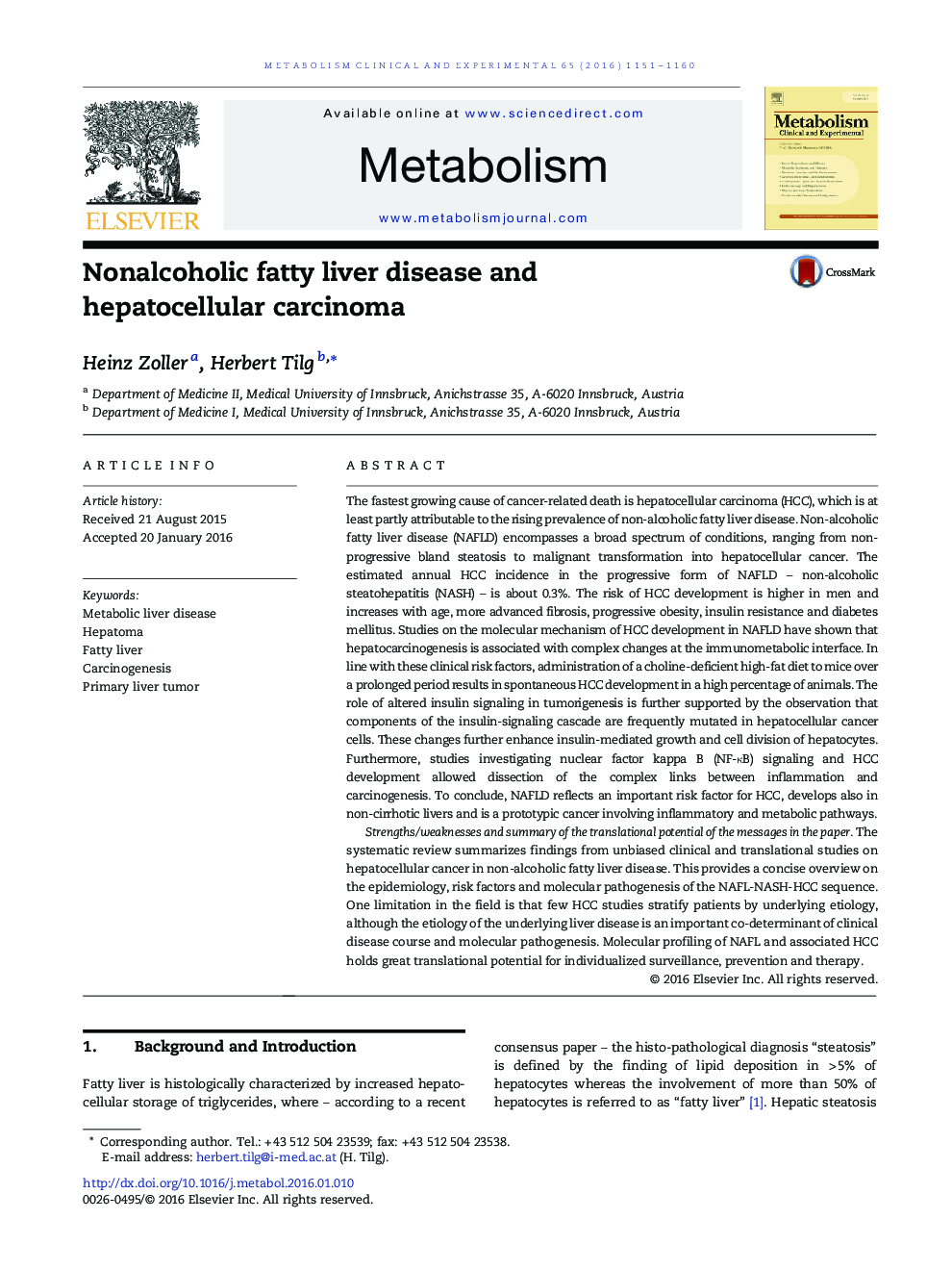| کد مقاله | کد نشریه | سال انتشار | مقاله انگلیسی | نسخه تمام متن |
|---|---|---|---|---|
| 5902998 | 1157043 | 2016 | 10 صفحه PDF | دانلود رایگان |
The fastest growing cause of cancer-related death is hepatocellular carcinoma (HCC), which is at least partly attributable to the rising prevalence of non-alcoholic fatty liver disease. Non-alcoholic fatty liver disease (NAFLD) encompasses a broad spectrum of conditions, ranging from non-progressive bland steatosis to malignant transformation into hepatocellular cancer. The estimated annual HCC incidence in the progressive form of NAFLD - non-alcoholic steatohepatitis (NASH) - is about 0.3%. The risk of HCC development is higher in men and increases with age, more advanced fibrosis, progressive obesity, insulin resistance and diabetes mellitus. Studies on the molecular mechanism of HCC development in NAFLD have shown that hepatocarcinogenesis is associated with complex changes at the immunometabolic interface. In line with these clinical risk factors, administration of a choline-deficient high-fat diet to mice over a prolonged period results in spontaneous HCC development in a high percentage of animals. The role of altered insulin signaling in tumorigenesis is further supported by the observation that components of the insulin-signaling cascade are frequently mutated in hepatocellular cancer cells. These changes further enhance insulin-mediated growth and cell division of hepatocytes. Furthermore, studies investigating nuclear factor kappa B (NF-κB) signaling and HCC development allowed dissection of the complex links between inflammation and carcinogenesis. To conclude, NAFLD reflects an important risk factor for HCC, develops also in non-cirrhotic livers and is a prototypic cancer involving inflammatory and metabolic pathways.Strengths/weaknesses and summary of the translational potential of the messages in the paperThe systematic review summarizes findings from unbiased clinical and translational studies on hepatocellular cancer in non-alcoholic fatty liver disease. This provides a concise overview on the epidemiology, risk factors and molecular pathogenesis of the NAFL-NASH-HCC sequence. One limitation in the field is that few HCC studies stratify patients by underlying etiology, although the etiology of the underlying liver disease is an important co-determinant of clinical disease course and molecular pathogenesis. Molecular profiling of NAFL and associated HCC holds great translational potential for individualized surveillance, prevention and therapy.
Journal: Metabolism - Volume 65, Issue 8, August 2016, Pages 1151-1160
